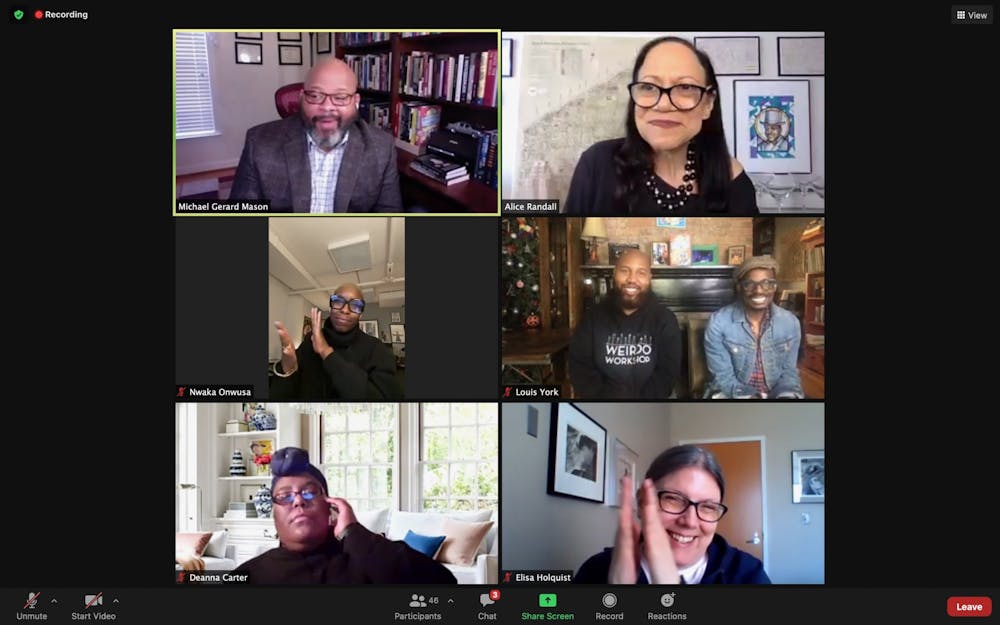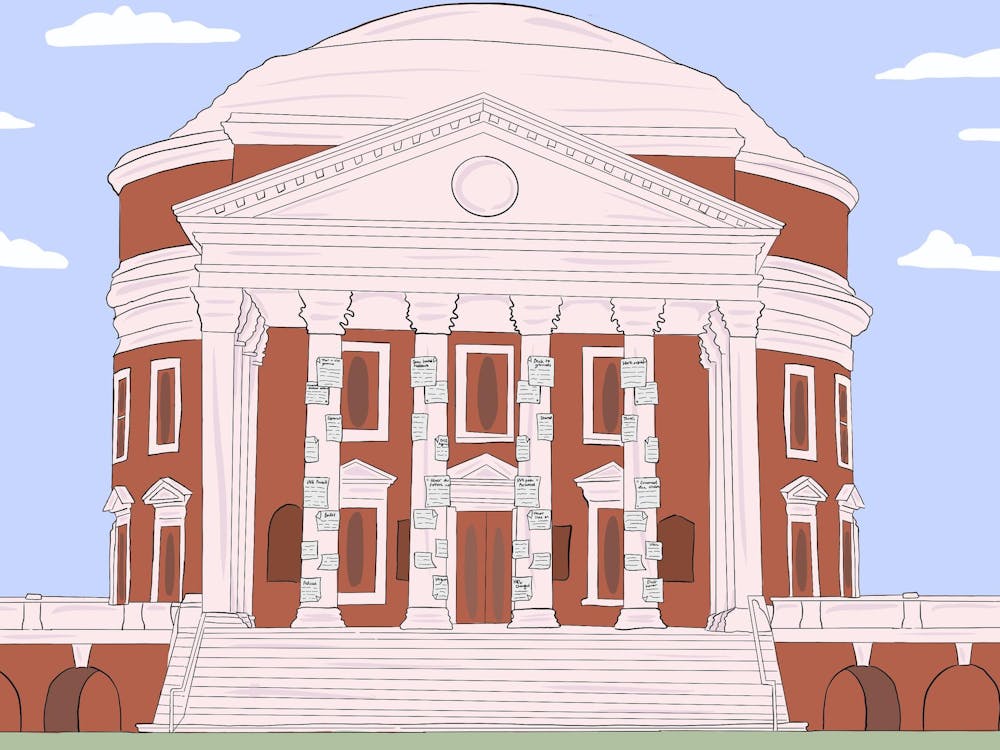Author Alice Randall, recording artist duo Louis York and Rock & Roll Hall of Fame curator Nwaka Onwusa gathered to celebrate Black history through the lens of Randall’s recently-published book, “Black Bottom Saints,” Friday in the Office of African-American Affairs’ kickoff event of a month-long celebration of Black History.
The Office of African-American Affairs selected Randall’s work to serve as the foundation of this month’s programming. The book documents the lives of 50-plus powerful “saints” who were raised in the Black Bottom neighborhood in Detroit in the early part of the 1900s.
Black Bottom refers to Detroit’s major Black neighborhood, which in the mid-twentieth century “rivaled New York in Black politics, Black fashion and Black sports,” Randall said. The novel is meant to remind people of the Black individuals who lived and thrived in this time period and to revive their memories and stories.
One figure featured in the book is the iconic Ziggy Johnson — who was a celebrated entertainment columnist, night club emcee and founder of the Ziggy Johnson School of Theatre.
Inspired by the Catholic Saints Day books, Johnson curated a list of nationally-recognized and local Black heroes — including legendary heavyweight champion Joe Louis, Rock and Roll Hall of Fame inductee Dinah Washington and renowned director Lloyd George Richards — whose stories Randall compiles into a collection of vibrant vignettes that bring these individuals back to life.
More than just a novel, “Black Bottom Saints” was a project that took “50 years of living, seven years of research and three years of writing” to create, Randall said.
As described by the Office of African American Affairs website, the event served as “a reminder that we have people who we can call on in difficult times for reminders that we will get through crises in good form.” The duo Louis York described the conversation as “divinely purposeful.”
Dr. Michael Gerard Mason, director of the Luther Porter Jackson Black Cultural Center, served as the event’s master of ceremonies and led the group in their effort to “break bread together.” The event was meant to “pay tribute to the work done by [Randall’s] text and the lives that were lived by the saints.”
The event’s speakers represented the different mediums of art that Randall hoped to uplift through her project.
Chuck Harmony and Claude Kelly, who together make up Louis York, founded their production platform Weirdo Workshop with the intention to “generate conversation through art,” according to their website.
Onwusa says curating at the Rock and Roll Hall of Fame lets her serve as a “culture shifter.” Her work in social justice and equity focus on “triumph and joy,” which “Black Bottom Saints” celebrates.
The event opened with a three-minute slideshow that featured vivid posters of each of the saints in a composite collage style. The slideshow ended with text that read, “We shall rise from the ashes,” precipitating a robust discussion about hope, triumph and radical joy.
All participants of the event emphasized the need to focus on triumph rather than trauma.
“Loving the song, loving the artifact, loving the performer [and] loving the chapter is a bridge to loving yourself, your family [and] your community, when you see yourself, your family and your community’s beauty reflected in the art,” Randall said.
Art as a powerful and pervasive force for healing and growth was a chief motif of the conversation.
“We want to spread the message that music belongs in a lot of different places,” York said. “We are travelling storytellers that should use all of our talents … to teach people about … our history and what it took to get here. Find reasons to lean into your gifts … when you do that, you find that you have a lot.”
Art also provides a way for individuals and communities to “rise from extreme loss,” according to Randall’s philosophy.
“You define you, and you get to be sustained by history and art,” Randall said.
Equally important to Randall is her belief that “telling and claiming our own stories can be an act of restorative justice.”
Randall lamented the demise of Black Detroit, which she attributes to the 1949 Federal Housing Act and subsequent redistricting and redlining efforts that led to extreme poverty, overcrowding and eventually demolition of the neighborhood.
Mason compared these redevelopment efforts to the demolition that occurred in Vinegar Hill, Charlottesville in the 1960s, when, like Black Bottom, the neighborhood was slated to be bulldozed in the name of an urban renewal project.
“Vinegar Hill is the Black Bottom of Charlottesville,” Mason said. “When you learn about Vinegar Hill and when you learn about Black Bottom, you learn about Black people all across the country.”
Randall noted the rich cultural legacy of Black Bottom, where music and art thrived in Black communities.
“Before Black Bottom vanished, it burned bright,” Randall said.
With her novel and the 28 days of programming around it, she hopes Black Bottom might burn bright again.
“Through art — the music of Louis York, the Spotify playlist which complements the text and the text itself — Black Bottom rises again,” Randall said.
Over the course of the month, the Office of African American Affairs will select a different Black Bottom Saint as well as a song from the Black Bottom Saints Playlist to highlight each day.
Onwusa hopes that people will remember “the importance of keeping our Black heroes … at the tip of our tongues.”
To further engage with Black History Month programming organized by the Office of African American Affairs, follow their Instagram account @lpjbccuva and their Facebook, @lpjbcc, and join their email list here.







